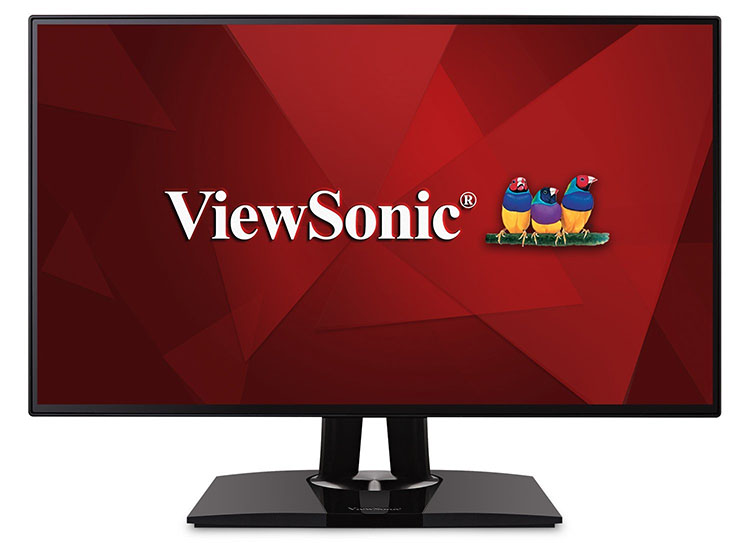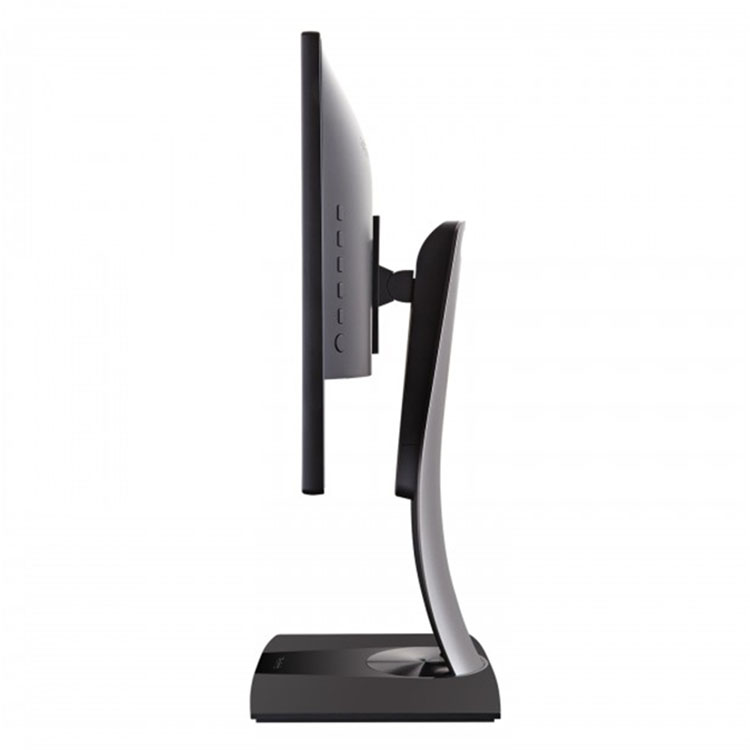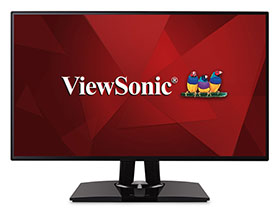Early Verdict
The ViewSonic VP2768 doesn’t represent the bleeding edge of color standards, but if all you need is sRGB and Rec.709, there are few better displays. And even fewer of those can match the VP’s excellent value. Despite a low price, it offers professional-grade build quality, precise factory calibration, and a clear, bright image courtesy of an up-to-date IPS/QHD panel. While some users may wish for DCI-P3 and HDR, adding those features will easily double the price of admission. Pros watching their budgets will want to give it a long, hard look.
Pros
- +
Out-of-box color accuracy
- +
Many calibration options
- +
Build quality
- +
Styling
- +
Value
Cons
- -
No BT.1886 gamma option
- -
Tops out at Rec.709/sRGB
Why you can trust Tom's Hardware
Features & Specifications
Professional monitors used to be narrow-focused displays with wide color gamuts and high price tags. Today, with multiple standards in use and prices on a slow decline, users can choose from among many screens that offer factory-certified accuracy, rugged build quality, and good value.
Some of our recent reviews have covered panels capable of a DCI-P3 gamut, and many products still support photography with Adobe RGB. But most video is still mastered in the sRGB/Rec.709 realm. And if that’s all you need, you can save quite a bit of money by going with something like the ViewSonic VP2768. It’s a 27” IPS panel with QHD resolution, 8-bit native color, and calibration options that encompass a huge OSD, or add-on software that automates the process. Let’s take a look.
Specifications
Back in June, we reviewed ViewSonic’s VP2771 and found it to be a very capable and well priced display for the professional. If you’re on a budget and need to trim a few bucks off the bottom line, the VP2768 delivers most of its stablemate’s accuracy and functionality for about $70 less.
You still get a factory calibration, with accompanying data sheet, a 14-bit internal look-up table, multiple color gamut options (up to sRGB), the ability to interface with ViewSonic’s Colorbration software and meter package, and rugged build quality. The panel sports QHD (2560x1440) resolution and a white LED backlight, and is made by LG Display. It’s nearly bezel-free and wrapped in a well-built chassis that appears ready for long-term reliability. It also has plenty of inputs and a DisplayPort output allowing two monitors to connect to a single video board. Comparisons? The only differences we can spot in the specs is the VP2771’s USB 3.1 ports. The VP2768 makes do with version 3.0. The 71 also has a 10-bit native panel but includes the same 14-bit internal LUT.
Packaging, Physical Layout & Accessories
Unpacking the substantial carton reveals calibration data and certifications for sRGB, Rec.709, EBU, and SMPTE-C standards. Our sample has no visible errors reported with average Delta Es under 1.0. Uniformity is also tested in the sRGB mode with compensation engaged. We’ll provide more detail on that feature later in the review.
Bundled cables include IEC power, USB 3.0, and DisplayPort. A CD provides drivers and a user manual. The Colorbration package was bundled with our sample, but buyers will have to shell out an additional $280 (MSRP) to add auto-calibration to their system. It is extremely handy, but if you've already got the necessary gear, the OSD offers full control over grayscale, gamma, and color management.
Product 360




The VP2768’s styling is smooth and simple with no sharp edges or angles in sight. From the front, a thin 8mm bezel can be seen when an image is present. A flush-mounted anti-glare layer covers the entire screen so it appears frameless when turned off. Not even a logo appears in that frame, nor is there a visible power LED or control buttons. Those can be found around the back-right side. Power is on the bottom and has a blue light which might reflect off a wall if your room is dark enough. Five more keys offer quick access to color modes, luminance, input selection, and the main OSD.
Get Tom's Hardware's best news and in-depth reviews, straight to your inbox.
The stand is very solid and offers perfectly damped movement with no play whatsoever. It’s one of the best functioning uprights we’ve seen of late. In addition to the 5” height adjustment, you get 60° swivel to either side, 21° forward tilt and 5° back, along with a portrait mode that automatically rotates the image when engaged.
The panel is relatively thin at just 2”. There are no side-mounted USB or audio ports; they are all on the bottom. The smooth taper theme continues here with no angles and just a small grill across the back for cooling. There are no speakers built in, but audio is supported by a single 3.5mm output jack.
Inputs are many and include two HDMI 1.4, two DisplayPort 1.2 (one mini), a DisplayPort output, 3.5mm audio out, and four downstream USB 3.0 ports fed by a single upstream connector.
MORE: Best Gaming Monitors
MORE: Best Professional Monitors
MORE: How We Test Monitors
MORE: How To Choose A Monitor
MORE: All Monitor Content

Christian Eberle is a Contributing Editor for Tom's Hardware US. He's a veteran reviewer of A/V equipment, specializing in monitors. Christian began his obsession with tech when he built his first PC in 1991, a 286 running DOS 3.0 at a blazing 12MHz. In 2006, he undertook training from the Imaging Science Foundation in video calibration and testing and thus started a passion for precise imaging that persists to this day. He is also a professional musician with a degree from the New England Conservatory as a classical bassoonist which he used to good effect as a performer with the West Point Army Band from 1987 to 2013. He enjoys watching movies and listening to high-end audio in his custom-built home theater and can be seen riding trails near his home on a race-ready ICE VTX recumbent trike. Christian enjoys the endless summer in Florida where he lives with his wife and Chihuahua and plays with orchestras around the state.
-
Lutfij Another well written write up Chris! One question though, is the monitor VESA mount compatible? From the side shots and the rear, the monitor looks like it can be detached from the stand and subsequently mounted to an arm/wallmount.Reply

